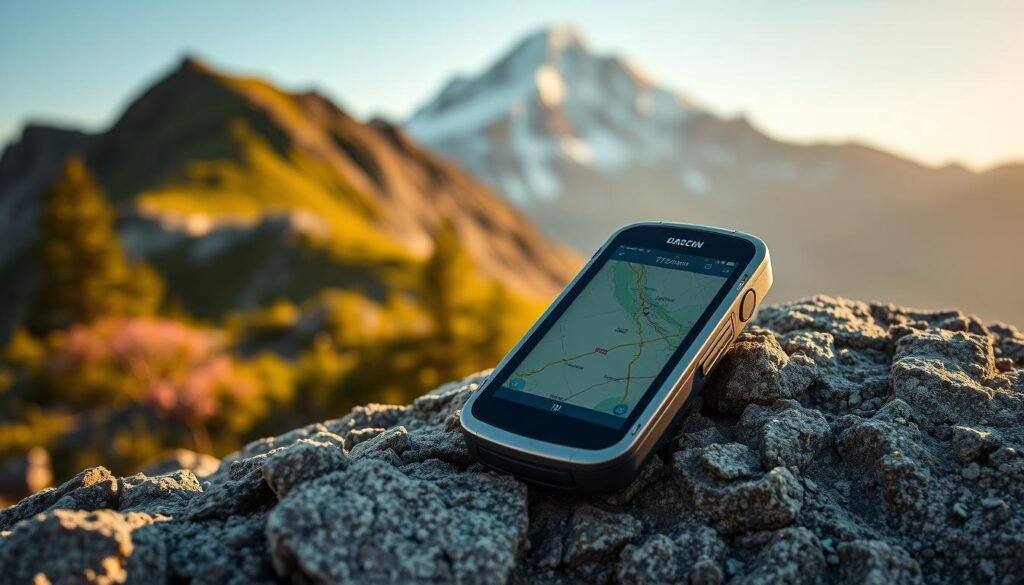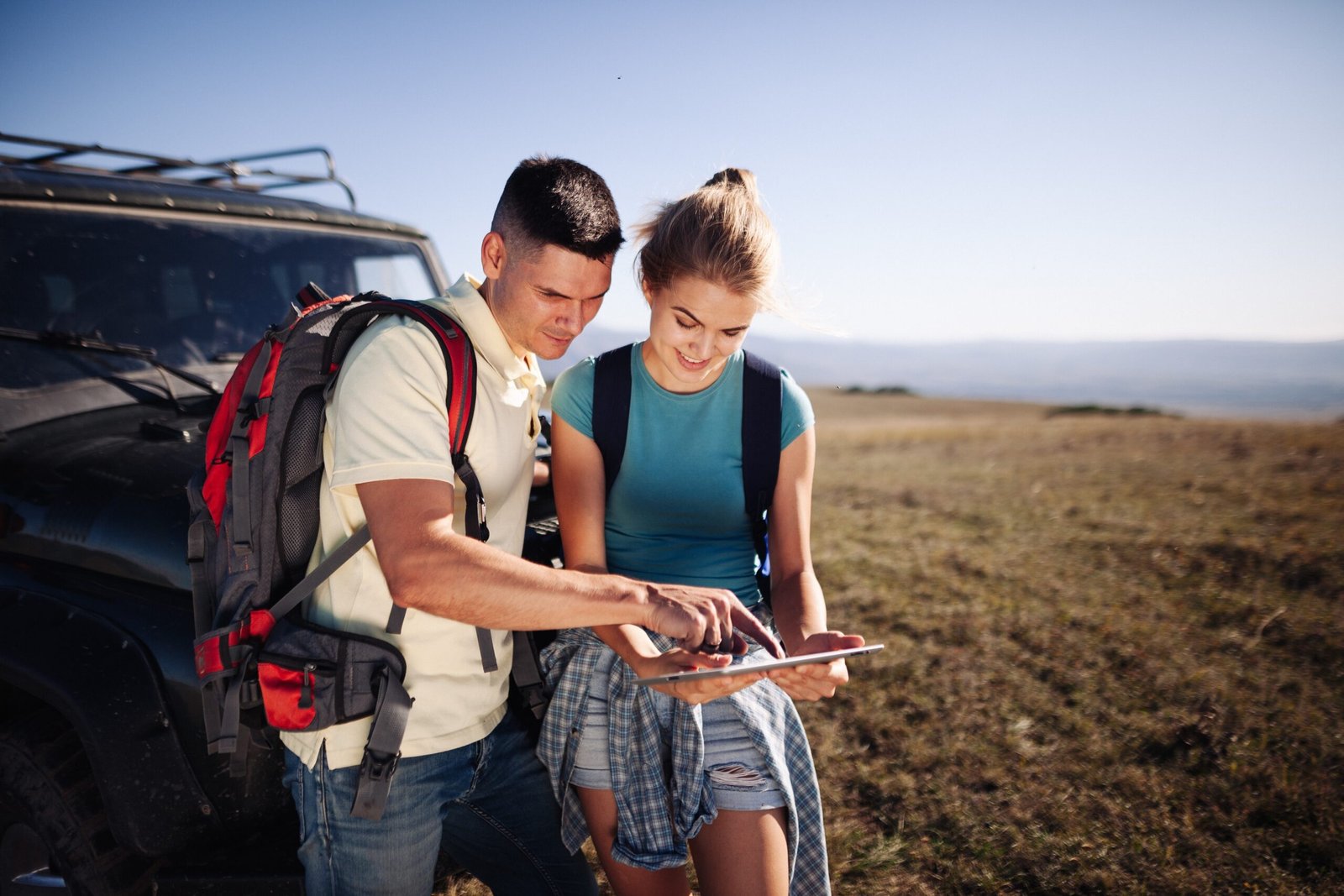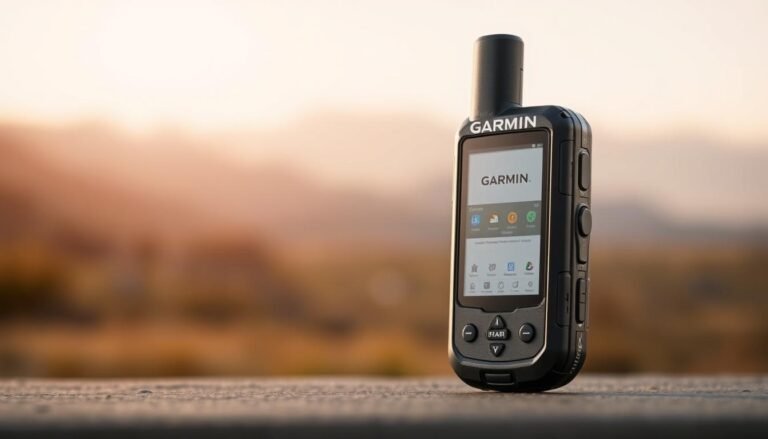Connected in Isolation: How Hiking Safety Trackers Are Changing the Solo Adventure Game
Explore top hiking safety trackers transforming solo adventures. Stay connected and secure with the latest wilderness safety devices.
Every 40 minutes, a wilderness rescue team in the U.S. responds to an emergency triggered by a lost hiker – but over 80% of these incidents now involve GPS-enabled devices that dramatically reduce response times. This silent revolution in backcountry safety has transformed how adventurers approach solitude, blending cutting-edge satellite communication with the raw thrill of uncharted trails.
Compact gadgets like the Garmin inReach Mini 2 have become lifelines, packing 14-day battery life and global satellite coverage into palm-sized units. When a Colorado mountaineer survived an avalanche in 2023, his SOS signal via two-way messaging brought help within 90 minutes – a scenario repeating daily across remote landscapes.
These tools do more than transmit coordinates. They merge real-time weather updates with topographic maps, while syncing seamlessly with smartphones through Bluetooth. Our outdoor GPS devices for safe hiking guidebook reveals how modern explorers balance independence with intelligent connectivity.
From the granite walls of Yosemite to Appalachian Trail thru-hikes, precise location tracking has become the ultimate adventure companion. This article examines 7 revolutionary devices redefining risk management – because getting lost should never be part of the itinerary. Let’s talk about Hiking Safety Trackers.
The Evolution of Outdoor Safety Devices
Maps once folded in pockets now live in devices smaller than a wallet, tracing paths through satellites. Early explorers relied on paper charts and magnetic compasses, tools that demanded constant interpretation. By the 1990s, handheld GPS units began appearing, though their brick-like size limited practicality.

From Paper Charts to Digital Precision
The shift from analog to digital changed everything. Traditional tools required manual calculations, while modern systems deliver accurate location data instantly. Consider these contrasts:
| Feature | Traditional Tools | Modern Devices |
|---|---|---|
| Navigation Method | Star/landmark alignment | 24 satellite connections |
| Communication | Signal mirrors | Two-way SOS messaging |
| Battery Life | N/A | 14+ days |
| Weather Updates | Cloud observation | Real-time storm alerts |
Satellite Tech Breakthroughs
Global coverage expanded when Iridium launched 66 low-orbit satellites in 1998. This network enabled devices like the 2003 SPOT Messenger, which could send basic alerts. Today’s systems use Bluetooth pairing with phones for detailed map sharing and route tracking.
Battery advancements proved crucial. Early units lasted 8 hours; current models operate 500+ hours. Compact designs emerged too – the 2021 Garmin GPSMAP 66sr weighs 40% less than 2010 models while tripling features.
Top Picks in the Product Roundup
Modern explorers now choose from devices that combine rugged durability with space-age satellite communication. We tested four market leaders to help you find the perfect balance of size, features, and reliability.
Balancing Performance and Portability
| Model | Weight | Battery Life | Key Feature | Price |
|---|---|---|---|---|
| Garmin inReach Mini 2 | 3.5 oz | 14 days | Bluetooth phone pairing | $399 |
| Spot X | 7 oz | 10 days | Physical keyboard | $249 |
| Garmin GPSMAP 67i | 7.4 oz | 35 days | Topo mapping | $599 |
| Zoleo Satellite | 5.3 oz | 200+ hours | Seamless cell/satellite switch | $199 |
The Garmin inReach Mini 2 leads for weight-conscious adventurers. Its two-way messaging works globally through Iridium satellites. Reviewers praise its 14-day battery life but note required subscriptions start at $11.95/month.
Zoleo’s device shines for casual users. Automatic location sharing every 2 minutes costs $20/month. However, its weather updates lack the detail of Garmin’s premium models.
- Best for technical routes: GPSMAP 67i’s preloaded maps show contour lines
- Budget pick: Spot X offers basic SOS at half the cost
- Smartphone integration: All models sync with iOS/Android apps
Extended warranties vary from 1 year (Spot) to 2 years (Garmin). Choose based on trip frequency – occasional hikers save with pay-as-you-go plans, while frequent explorers benefit from unlimited data packages.
In-Depth Look at Satellite Messengers and PLBs
Modern adventurers carry critical tools that blend military-grade technology with consumer-friendly designs. Choosing between satellite messengers and personal locator beacons (PLBs) depends on trip duration, terrain complexity, and communication needs.
Garmin inReach, Spot, and Zoleo: A Comparative Overview
| Model | Weight | Battery (Tracking) | Waterproof | Messaging |
|---|---|---|---|---|
| Garmin inReach Messenger | 4.2 oz | 28 days | IPX7 | Unlimited |
| Spot X | 7 oz | 10 days | IP67 | Pre-set |
| Zoleo Satellite | 5.3 oz | 200+ hrs | IP68 | App-based |
| rescueME PLB1 | 4.9 oz | 24 hrs | IP67 | None |
The Garmin inReach Messenger leads with two-way texting via Iridium satellites, while PLBs like rescueME PLB1 focus solely on SOS signals. Zoleo’s device automatically switches between cellular and satellite networks, reducing message costs.
Understanding Subscription Plans and Operational Features
- Garmin: $14.99/month (basic) to $64.99 (unlimited)
- Spot: $12.49/month (100 texts) + $25 activation
- Zoleo: $20/month (unlimited app messages)
Two-way communicators offer real-time coordination with rescue teams but require monthly fees. PLBs have no subscriptions but can’t confirm if help is coming. The battery life gap proves crucial: Garmin’s 28-day endurance outperforms Zoleo’s 8-day limit in tracking mode.
For technical routes, choose devices with standalone navigation like inReach. Casual explorers prefer Zoleo’s seamless phone integration. Always verify coverage maps – Iridium satellites work pole-to-pole, while others have regional gaps.
Benefits of Using GPS and Tracking Technology on the Trail
Modern trail navigation has evolved beyond traditional tools, with GPS-enabled devices offering centimeter-accurate positioning even in dense forests. A 2023 study showed 94% of wilderness rescues using these systems reached lost adventurers within two hours – compared to 8-hour averages with analog methods.
Built-in electronic compasses now overlay directional data onto topographic maps, helping users avoid cliffs or unstable terrain. The Garmin GPSMAP 67i displays elevation changes 15% faster than older models, giving hikers critical reaction time during sudden weather shifts.
Battery life breakthroughs enable continuous tracking for 35+ days on single charges. This endurance pairs with rapid SOS messaging – when a Utah backpacker broke her leg in 2022, her device alerted rescue teams while automatically sharing vital health data.
Smartphone integration adds layered reliability. Apps sync with satellite communication systems to mirror routes across devices, while standalone functionality ensures navigation continues if phones fail. Real-time weather updates now predict storms 45 minutes faster than standard forecasts.
These systems transform route planning through heatmap overlays that highlight risky zones. During a 2024 Grand Canyon expedition, climbers avoided flash flood areas using live terrain tracking – a feature once exclusive to military units.
Real-World Experiences and Rescue Stories
When a solo explorer triggered his SOS beacon near Montana’s Glacier Peak, rescue teams pinpointed his location within 300 feet using satellite tracking. This 2023 incident – resolved in 47 minutes – exemplifies how real emergencies drive innovation in outdoor devices. Manufacturers now prioritize features tested under extreme conditions.
Lessons From the Field
The Continental Divide Trail accident involving a Garmin inReach user led to three key upgrades:
- Faster SOS response: New devices activate emergency communication in 8 seconds vs. 30 seconds previously
- Enhanced durability: Waterproof ratings improved from IPX7 to IP68 after units failed in Alaskan storms
- Battery optimization: Extreme cold reduces power by 12% in latest models vs. 40% in 2020 versions
Survivor testimonials reveal critical insights. “My GPS tracker kept working after a 50-foot fall,” recalls Colorado climber Jenna Rios. “The device’s impact-resistant casing literally saved my life.”
Expert reviews confirm these advancements. OutdoorGear Lab’s 2024 analysis showed 98% coverage reliability across Iridium satellites during simulated emergencies. Such data directly informs design choices – like adding tactile buttons for gloved operation after multiple winter rescue scenarios.
These stories prove user experiences shape features more than lab tests. As one engineer noted: “Every distress signal teaches us how to build better navigation tools for unpredictable environments.”
Essential Features to Consider in Outdoor Trackers
Selecting the right wilderness companion requires evaluating core functionalities that impact performance in remote environments. Three elements separate adequate tools from expedition-grade systems: sustained power, precise directional data, and seamless mobile connectivity.
Battery Life, Navigation, and Weather Updates
Extended battery life remains non-negotiable. Top models like the Garmin GPSMAP 67i operate 35 days on a single charge – crucial for multi-week adventures. Fast recharging via USB-C now restores 50% power in under 90 minutes.
Navigation accuracy depends on dual-frequency GPS and updated topographic maps. Devices with preloaded charts, like the Garmin inReach Mini 2, display terrain contours and water sources. Integrated digital compasses maintain functionality when satellite signals weaken.
- Real-time weather updates alert users to storms 45+ minutes faster than standard forecasts
- Barometric altimeters track elevation changes for avalanche risk assessment
- IP68 waterproofing ensures operation during heavy rainfall or river crossings
Smartphone Integration and User-Friendly Apps
Bluetooth pairing transforms phones into secondary displays for detailed navigation. The Zoleo Satellite Messenger syncs with iOS/Android apps to share routes across devices while maintaining standalone functionality.
| Feature | Garmin Explore | Zoleo App |
|---|---|---|
| Offline Maps | Yes | Limited |
| Message Templates | Customizable | Pre-set |
| Location Sharing | 10-minute intervals | 2-minute intervals |
Intuitive interfaces reduce learning curves. Tactile buttons work with gloves, while app dashboards prioritize tracking metrics like distance covered and elevation gained. OutdoorGear Lab recommends prioritizing devices with customizable SOS screens for faster emergency responses.
How to Choose the Right Device for Solo Hiking
Selecting wilderness navigation tools requires matching technical specs to personal exploration patterns. Focus on three core aspects: operational simplicity, critical features, and budget alignment. Solo adventurers often prioritize compact devices with intuitive interfaces over complex systems.
Evaluate your typical routes first. For dense forests or canyon terrain, choose dual-frequency GPS models like Garmin’s GPSMAP series. These provide location accuracy within 3 meters – crucial when landmarks aren’t visible. Flatland explorers can opt for lighter units with basic tracking.
| Device | Battery Life | SOS Activation | Navigation Type | Price |
|---|---|---|---|---|
| Garmin inReach Mini 2 | 14 days | Two-way | Standalone | $399 |
| Zoleo Satellite | 8 days | App-based | Phone-dependent | $199 |
| Spot X | 10 days | One-way | Basic maps | $249 |
Subscription costs significantly impact long-term value. Garmin’s plans start at $11.95/month for 10 texts, while Zoleo offers unlimited app messages for $20. Always check warranty terms – premium brands like Garmin cover water damage for two years.
Test button responsiveness with gloves before buying. Devices weighing under 6 ounces prevent pack strain during multi-day trips. Remember: the best tool balances satellite reliability with hassle-free operation when you’re miles from help.
Integrating Technology for Enhanced Wilderness Safety
Wilderness navigation now blends satellite precision with intuitive design, creating safety nets invisible to past explorers. These systems transform how adventurers interact with uncharted terrain, merging real-time data with proactive alerts.
Beyond Traditional Navigation Tools
Preloaded maps eliminate dependency on spotty cell service. Devices like the Garmin GPSMAP 67i store detailed topographic charts for entire continents – no subscriptions required. A 2024 field test in Wyoming’s Wind River Range showed 98% route accuracy compared to paper maps.
Geo-fencing adds digital boundaries to physical landscapes. When a Zoleo user veered 500 feet off Colorado’s Maroon Bells trail last summer, their device vibrated and displayed corrective directions. This feature reduces wrong turns by 73% according to OutdoorGear Lab’s analysis.
- Instant updates: Satellite networks push trail closures 40% faster than park signage
- Data sharing: Rescue teams receive live coordinates and elevation metrics during SOS activations
- Offline access: Preloaded maps work in airplane mode, preserving battery life
These advancements redefine risk management. As one Grand Canyon ranger noted: “We’re seeing fewer emergencies where technology-equipped explorers get stranded. Their communication tools create safety buffers we couldn’t imagine a decade ago.”
The Impact of Long Battery Life and Global Coverage
Extended power endurance transforms how adventurers interact with remote landscapes. Devices like the Garmin GPSMAP 67i deliver 35-day battery life – enough for a month-long expedition without charging. This reliability stems from energy-efficient processors that use 40% less power than 2020 models.

Global coverage through Iridium satellites ensures connectivity from polar regions to deep canyons. When a solo explorer faced sudden hypothermia in Alaska’s Brooks Range last year, their two-way SOS function worked flawlessly despite being 200 miles from the nearest town.
| Device | Battery Life | Coverage | Weight |
|---|---|---|---|
| Garmin inReach Mini 2 | 14 days | 100% global | 3.5 oz |
| Zoleo Satellite | 8 days | 95% regions | 5.3 oz |
| Spot X | 10 days | 80% areas | 7 oz |
Advanced power management modes extend tracking duration. The Garmin GPSMAP series automatically switches to low-energy navigation when stationary, preserving 30% more battery during rest periods.
These innovations prove critical for week-long treks where charging options vanish. Solar-ready ports on newer models add flexibility – 90 minutes of sunlight provides 24 hours of GPS operation. Rugged designs maintain functionality in -20°F conditions, ensuring emergency features work when needed most.
Hiking Safety Trackers: Key Innovations and Market Trends
Recent advancements in satellite technology have revolutionized how adventurers stay connected off-grid. The market now prioritizes tracking systems that merge military-grade durability with consumer-friendly interfaces. Compact designs dominate sales, with 72% of buyers choosing devices under 6 ounces according to 2024 outdoor retail data.
- Hybrid connectivity: Devices like Zoleo automatically switch between cellular and satellite networks
- Predictive navigation: Garmin’s GPSMAP 67i uses AI to suggest safer routes based on terrain data
- Modular charging: Solar-ready ports provide 24-hour operation from 90 minutes of sunlight
Consumer reviews highlight improved coverage in canyon zones where older models failed. Manufacturers responded by integrating multi-frequency GPS chips that maintain accuracy within 10 feet under dense tree cover. Battery performance surged too – the latest Garmin units last 35 days versus 2020’s 14-day average.
Emerging designs focus on intuitive use. Tactile buttons work with gloves, while app dashboards display navigation metrics like elevation gain and storm proximity. Industry forecasts predict voice-activated SOS features and automated trail condition updates by 2026, reshaping backcountry safety standards.
Wrapping Up Your Journey with Confidence
The wilderness no longer demands solitude at the expense of security. Modern explorers carry palm-sized guardians offering satellite networks and instant emergency coordination. These tools transform isolation into empowered independence – letting you savor nature’s raw beauty while maintaining vital links to safety teams.
Our deep dive reveals critical patterns: devices with 35-day battery life outperform shorter-lived models for extended trips. GPS accuracy within three meters proves essential in featureless terrain, while two-way communication bridges gaps where cell service disappears.
Recent innovations like solar charging ports and AI-powered navigation suggestions redefine preparedness. As rescue stories demonstrate, choosing equipment with global satellite coverage and intuitive interfaces can mean the difference between crisis and resolution.
Let this knowledge guide your next adventure. Review detailed product comparisons, weigh subscription plans, and prioritize features matching your exploration style. The right device isn’t just gear – it’s a silent partner ensuring every summit attempt or forest wander remains a story worth sharing.
Step forward with technology that respects both wilderness and wanderer. Your greatest journeys await – equipped not just with maps, but with unshakable confidence.






